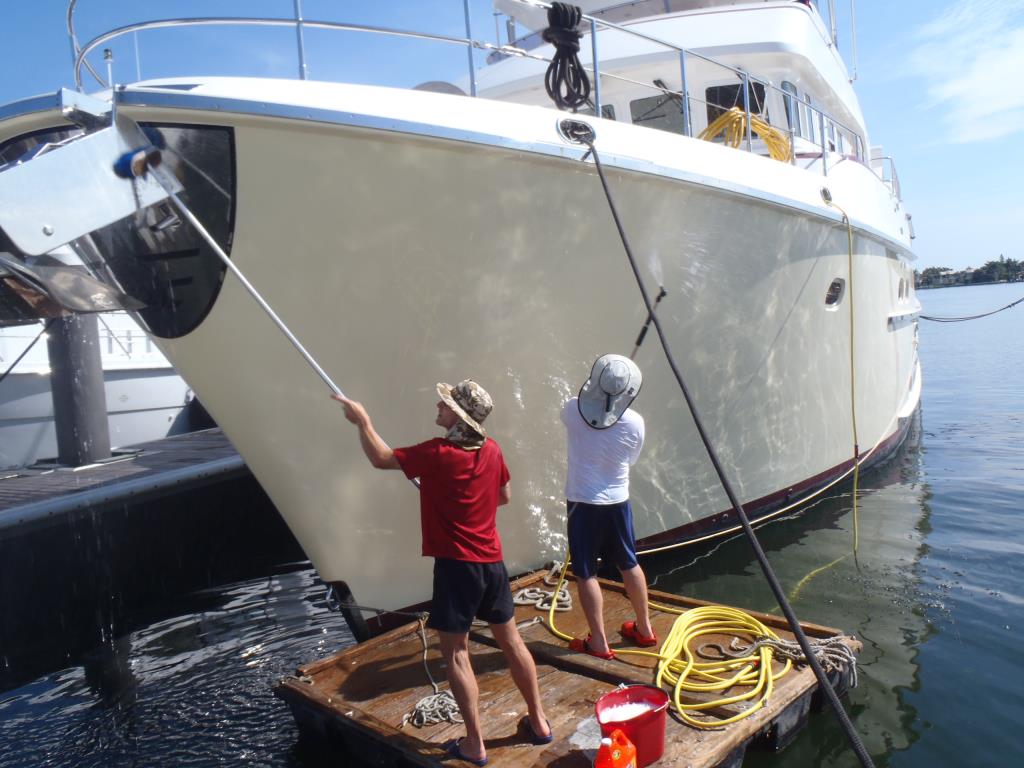
KEEPING YOUR BOAT CLEAN
The trick is to get the cleaning and maintenance finished so you can maximize your time on the water.
Fresh Water & Woolite
Eisenglass (clear flexible vinyl) should not be cleaned with an ammonia-based glass cleaner because the ammonia breaks it down and will dry it out. The best approach is to wash eisenglass with fresh water, add some Woolite for a second wash, then rinse. Dry the eisenglass with a soft cotton or microfiber cloth and apply 210 Plastic Cleaner or Plexus for long-lasting protection.
Waterline Wars
Nothing's worse than leaving the boat ramp with a dingy waterline stain, but there's no reason to let that nasty stain linger. After hauling the boat, soak a sponge in vinegar and wipe down the water stains. Some will disappear immediately; usually what remains will be gone by the time you get home. Some stains require other products
Skin Deep
Surface rust can be taken off metal and fiberglass with a paste made of water and baking soda (50-50). Rust that's more than skin deep, however, requires a potent cleaner containing oxalic acid. Find several to choose from at West Marine. Always remember to thoroughly rinse it away after the rust disappears because the acid can damage metals and fiberglass if left on too long.
Rain, Rain, Go Away
Use Rain-X on your boat's exterior glass. Once Rain-X is applied, the glass doesn't attract or retain hard water spots as easily, and unless in a downpour you don't need to run the wipers because the water simply slips off the glass.
Tart Up Aluminum
Dissolve two tablespoons of cream of tartar in one quart of hot water, and use it as a polish with a soft cloth.
Preventive Maintenance
If you want a clean windshield when you arrive at the boat ramp after a long haul down the road, simply cover your windshield with a strip of plastic wrap before leaving home. Secure it well. When you arrive at the boat launch, peel the plastic wrap off and unavoidable bug splatters and road grime will peel away with it.
Cockroach Killer
Use equal parts baking soda and powdered sugar. The sugar attracts them and the baking soda kills them. Editors' Note: Cockroach hotels are another option.
Clean And Green
Save major cleaning jobs for when the boat is out of the water. When using cleaning products keep them near the center of the boat to reduce the chance of an overboard spill, and when performing bigger jobs on land, try to conduct the work as far from the water's edge as possible.
Don't Forget The Canvas
Every time you wash your boat with a soft deck brush, use the same brush and soap on the boat cover or other canvas, which will keep canvas clean for a long time.
Fog B Gone
When acrylic windscreens and opening ports become foggy looking from countless tiny scratches, buff them out with regular toothpaste (not gel). It has just the right amount of abrasives to buff out those scratches without making a bunch of new ones. All it takes is time, elbow grease, and lots of circular motion with a cotton rag. Try out on a small spot first.
Stain Magic
Magic Eraser, a Procter & Gamble Mr. Clean product, is a great tool to have on the boat. It gets rid of stubborn stains, skid marks, and streaks on just about any surface. I use a Magic Eraser pad for nonskid deck areas. You'll need to rinse your work area as you go; if it remains in contact with an area for an extended time, its "magic" will remove a waxed finish.